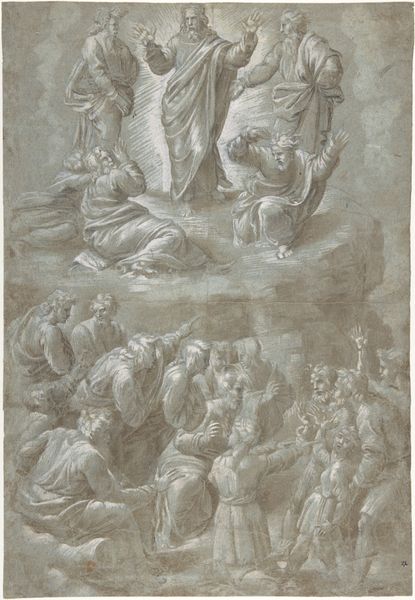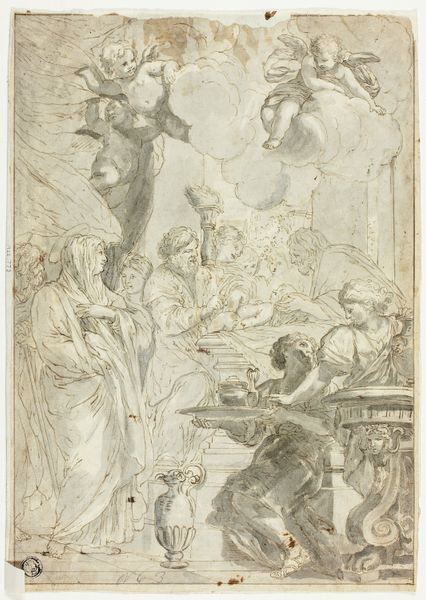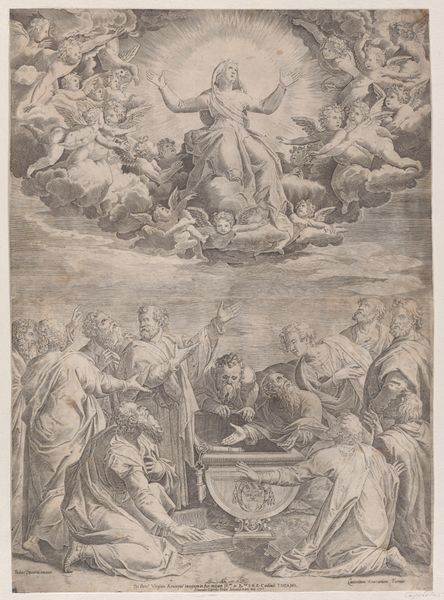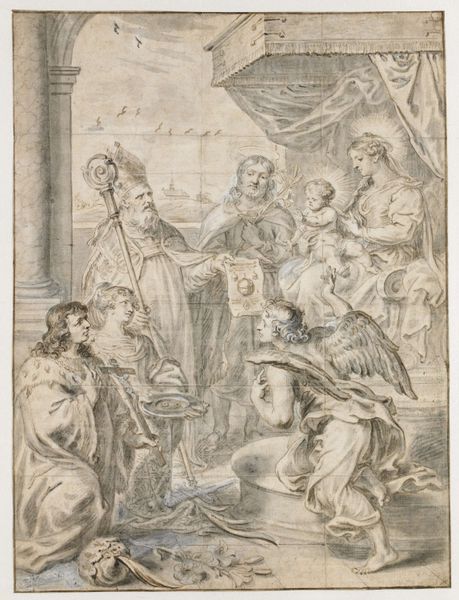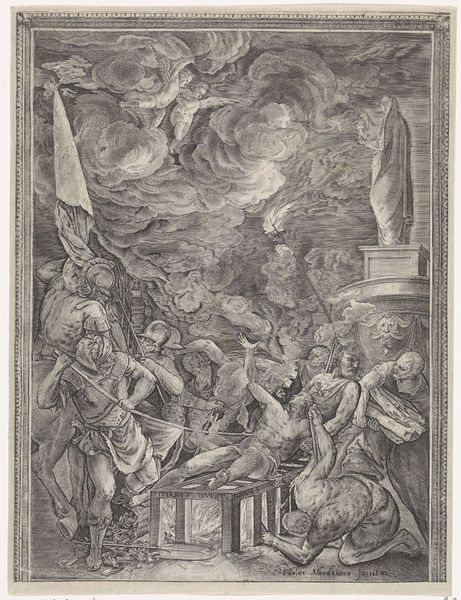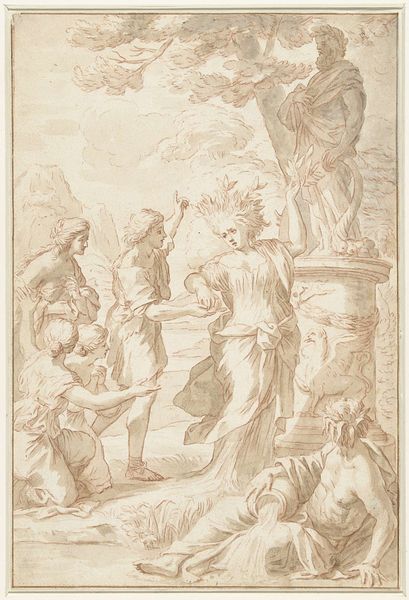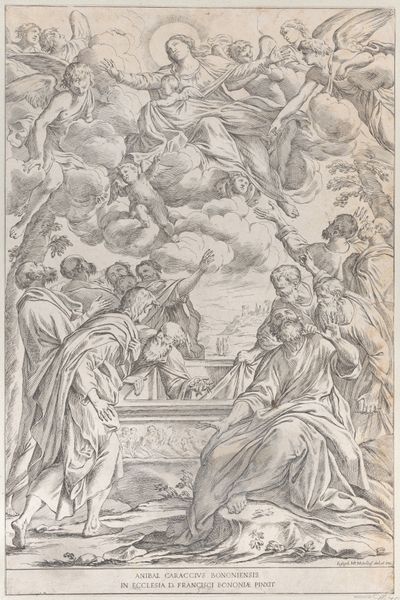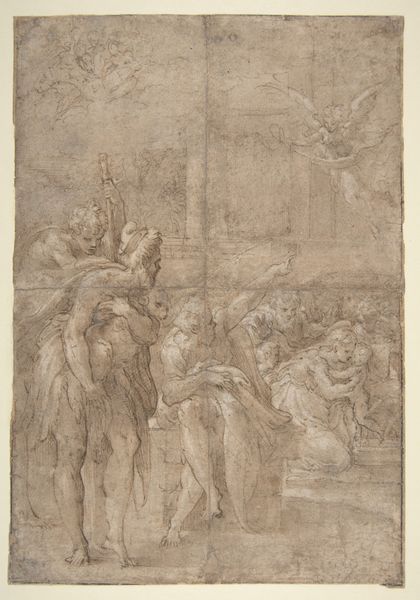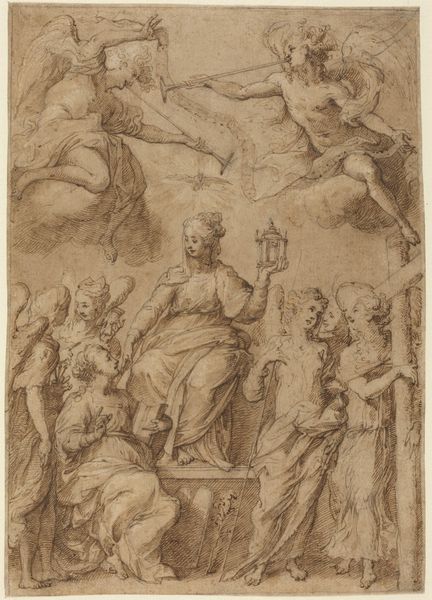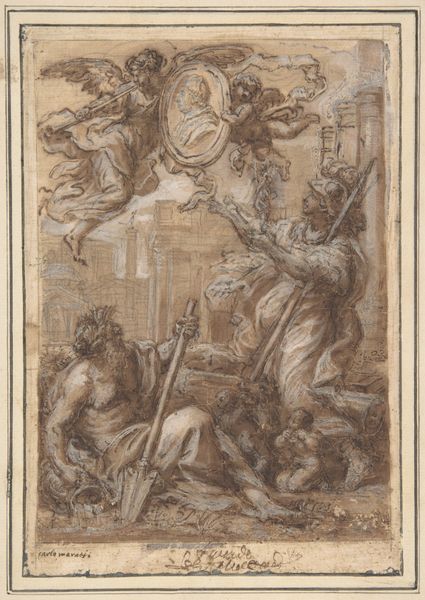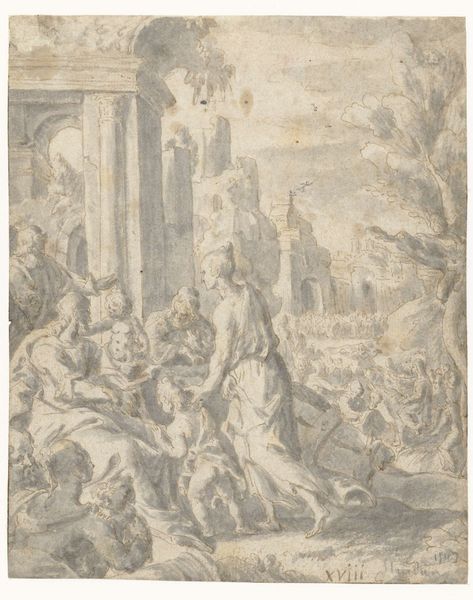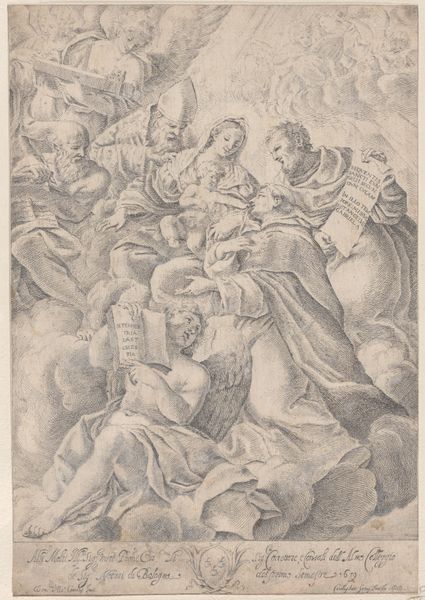
drawing, ink, pen
#
drawing
#
narrative-art
#
pencil sketch
#
etching
#
figuration
#
11_renaissance
#
ink
#
pen
#
history-painting
#
pencil art
Dimensions: height 219 mm, width 160 mm
Copyright: Rijks Museum: Open Domain
Curator: Oh, my. It's… sepia-toned longing. All those figures gazing upwards, full of a desperate kind of hope. Editor: Indeed. What we have here is a drawing, possibly a study, entitled “Hemelvaart van Maria” – or “The Assumption of Mary” in English. Created sometime between 1592 and 1620, we unfortunately don't know who the artist was, and it is held at the Rijksmuseum. The anonymous artist used pen, ink, and pencil to capture this heavenly scene. Curator: Anonymous, huh? Makes you wonder what stories are hiding behind that… Was it a monk sketching in secret, a woman denied recognition? I immediately want to write a poem about it. There's so much unsaid, which almost adds to its haunting quality. It feels so…fragile. Like a whisper from the past. Editor: Precisely. The fragility speaks volumes. It exists in a cultural context where women's spiritual elevation was often intertwined with prescribed roles and expectations. And this piece reflects the pervasive theme of salvation as seen through the very human lens of the divine feminine, especially potent during the Renaissance. It would be fruitful to question whether that salvation, symbolized by her ascension, actually allows any possibility of subverting patriarchy here on Earth. Curator: It's a really striking juxtaposition. Mary's being lifted by what looks like a whole squad of angels. But below, all these earthbound dudes... they're all stuck looking up! They're trapped, in a way, in their awe. She, meanwhile, is becoming unbound from the earthly. Editor: They embody a visual power dynamic. Notice their gestures: yearning, supplication. In art history, you’d be remiss if you didn’t note the significance of upwards gazing, particularly regarding expressions of piety and devotion but really, in any power imbalance, there will always be the upwards gaze of subjugation, yearning, envy, whatever it may be. In any system, power relations are constructed as vertically as horizontally. Curator: Right. Maybe that fragility I mentioned is a reflection of the limited power women actually possessed back then, even divine ones! Even as she transcends, they remain tethered. The expressions, though… Some are moved, some almost skeptical, as though they could only conceptualize her ascension, never actually *feel* it. Editor: Perhaps the artwork inadvertently captures a paradox: Mary's divine elevation occurred precisely when women were very materially repressed in this temporal space. It poses difficult questions: does spiritual reverence automatically translate into true socio-political empowerment? Curator: Food for thought, for sure. It has shifted the image for me, definitely made it even more poignant, maybe even with an edge of defiance – which is often the case with historical works! Now, when I look at the etching, I can’t unsee that layered complexity. Thank you. Editor: And thank you for prompting that little…ascension into historical context.
Comments
No comments
Be the first to comment and join the conversation on the ultimate creative platform.
